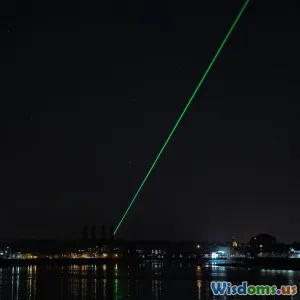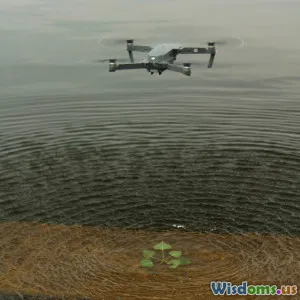
How Military Hackers Penetrate Enemy Defense Networks Unnoticed
12 min read Explore the tactics and technology that allow military hackers to infiltrate enemy defense networks undetected and the global implications of these stealthy cyberwarfare strategies. (0 Reviews)
How Military Hackers Penetrate Enemy Defense Networks Unnoticed
Introduction: The Silent Soldiers of Cyberwarfare
In the early hours of a quiet morning, an adversary's defense network suddenly goes dark. Alarms don’t sound. Security teams scramble but find no trace of an intruder—until, days later, the consequences become clear. The cause? Military hackers executing a meticulously planned, invisible cyber operation.
Today’s battlefields are not only made of mud, steel, and camouflage—they exist in fiber-optic cables and blinking server panels. National militaries, realizing their adversaries are just keystrokes away, now cultivate secretive teams: expert hackers trained to slip into enemy networks as ghosts, unseen and unheard.
But how do these digital infiltrators penetrate heavily fortified defense infrastructures, often without leaving a trace? This article dives into the shadowy world of military cyber-espionage, explaining the sophisticated methods, real-world examples, and extraordinary technology powering these silent soldiers.
The Foundations of Cyber Infiltration
Moving Beyond Firewalls: Understanding Attack Surfaces
Enemy defense networks seem impenetrable: next-generation firewalls, intrusion detection systems, multi-factor authentication protocols. Yet, the greatest barriers often hide the smallest cracks. Military hackers first identify these potential vulnerabilities—collectively known as the "attack surface."
"Offense is about identifying the weakest link and exploiting it," commented Kevin Mandia, cyber-defense expert and CEO of Mandiant, a renowned cybersecurity firm.
These entry points range from overlooked software vulnerabilities and unpatched servers to mistakenly exposed networking gear and even poorly configured cloud assets. A single unguarded endpoint may unravel an entire cyber-fortress.
Cyber Reconnaissance: Mapping the Battlefield
Military hackers launch comprehensive reconnaissance campaigns before a strike, leveraging both open-source intelligence (OSINT) and clandestine tools. For example:
- Social Engineering: Posing as trusted technicians or contractors to collect credentials via spear-phishing.
- Network Scanning: Using tools like Nmap or custom scripts to automatically map connected devices and identify running services or open ports.
- Metadata Harvesting: Mining information from seemingly innocent documents shared online that might reveal internal usernames, email structures, or even system versions.
For instance, Operation Aurora in 2010 saw Chinese-state linked hackers using clever spear-phishing emails to compromise Google and dozens of major US enterprises, exploiting both digital and human frailties.
Infiltration Techniques: Staying Beneath the Radar
Zero-Day Exploits: The Secret Weapons
A "zero-day" refers to previously unknown software vulnerabilities, leaving targets with zero days to patch before exploitation. Military cyber units invest heavily in discovering, purchasing, and sometimes hoarding these exclusive exploits, valued in the black market between $50,000 and $2.5 million depending on severity and type.
Stuxnet (2010), widely believed to be a US-Israeli initiative, famously used four zero-days against Iranian nuclear centrifuges—an operation so stealthy, it sat undetected for more than a year while sabotaging key enemy infrastructure.
Living off the Land: Using Native Tools
Rather than introducing new software that could trigger alerts, hackers use the target’s own operating system and enabled tools. This practice, called “Living Off the Land,” might entail:
- Leveraging built-in PowerShell commands for movement and privilege escalation.
- Using legitimate remote administration services (like RDP, Telnet, or SSH) with stolen credentials.
- Manipulating scripts or scheduled tasks to deploy hidden payloads.
NotPetya (2017), widely attributed to a Russian military group, spread laterally in organizations by hijacking trusted update mechanisms and Windows tools, complicating detection.
Encryption and Steganography: Cloaking the Communication
Once inside, hackers must cover digital footprints and relay data back to command centers without raising suspicion. Obfuscation techniques include:
- End-to-End Encryption: Ensuring data exfiltrated is unreadable to eavesdroppers.
- Steganography: Hiding malicious code or commands inside innocuous files, like JPEG images or PDFs.
By using regular HTTPS connections and mimicking “normal” traffic patterns, military hackers can often disguise exfiltration from traditional intrusion-detection systems.
Avoiding Detection: The Art of Remaining Invisible
Bypassing Security Controls with Lateral Movement
After initial compromise, the goal is to move "laterally"—from the first beachhead to more critical internal systems. Sophisticated camouflage and deception are key:
- Exploiting trust relationships between machines.
- Upscaling privileges by pass-the-hash or kerberoasting attacks, which target authentication systems like Kerberos.
In 2015, Russian operatives penetrated the Pentagon’s unclassified Joint Staff email system, reportedly leveraging compromised credentials to move across network segments and pass undetected for weeks.
Custom Malware: Crafted for Stealth
Generic malware triggers commercial antivirus. But custom binary payloads, often written anew for each target, can blend in seamlessly. Attributes include:
- Unique code signatures.
- Delayed execution, running only at specified times or under certain conditions.
- Validation against the victim’s specific antivirus or endpoint defense before deployment.
Military hackers sometimes utilize “fileless malware,” which exists solely in memory and erases itself after use, making post-incident forensic investigation nearly impossible.
Dynamic Command-and-Control (C2) Channels
To receive real-time instructions or pivot operations, hackers establish covert C2 channels:
- Rotating domain names to elude blacklists.
- Exploit compromised public infrastructure (e.g., hijacked Twitter accounts for one-way communication).
- Use decentralized peer-to-peer networks for relaying.
This agility keeps operations running even if parts of an attack infrastructure are discovered and disrupted.
Real-WORLD Operations: Case Studies in Stealth
The Sandworm Attacks: Ukraine’s Power Grid Blackouts
In December 2015 and again in 2016, Ukraine’s power grid was crippled in meticulously orchestrated operations. Attribution points to the Russian military unit “Sandworm,” employing tactics that:
- Pilfered credentials months in advance.
- Underwent dry runs to study incident response times.
- Disabled backup supplies and phone systems, compounding confusion and logless reboots.
Mikko Hyppönen, chief research officer at F-Secure, observed, “What was remarkable wasn’t just the cyberattack itself, but how attackers synchronized technical actions with physical disruptions.”
Operation Buckshot Yankee: The Thumb Drive That Hacked the Pentagon
In 2008, a worm known as Agent.btz found its way into the US Department of Defense through a seemingly innocuous USB stick. The malware cloaked itself, phoned home to foreign adversaries, and spread among classified systems. The incident exposed severe shortfalls in endpoint protection and led to sweeping reforms in US military cyber hygiene.
Countermeasures and Ethical Questions
Evolving Defenses: The Challenge of Attribution
While militaries obsess over crafting perfect intrusions, defending agencies turn to:
- AI-Based Detection Systems: Algorithms designed to baseline "normal" behavior, instantly identifying anomalies in huge volumes of data.
- Network Segmentation: Limiting movement by isolating critical infrastructure.
- Red Teaming: Hiring friendly offensives to mimic adversarial techniques, proactively exposing weaknesses.
One persistent challenge, however, is attribution. “A smart attacker can make hacks look like they originated anywhere,” said Michael Daniel, former White House cybersecurity coordinator. This ambiguity fuels escalation and complicates diplomatic or military responses.
The Thin Line: Espionage or War?
Military cyber operations spark crucial debates:
- Legitimacy: Is silent infiltration a legitimate tool of statecraft, akin to spying, or an act of war?
- Collateral Damage: Malicious code may spill outside intended targets (Stuxnet infected computers worldwide before being studied).
- Escalation Risks: Detection can trigger immediate and severe responses—digital or kinetic.
The 2015 UN Group of Governmental Experts recognized the urgent need for norms around state behavior in cyberspace, but consensus remains elusive.
The Future of Unnoticed Infiltration
Quantum Computing & AI: Next-Generation Tools
Military hackers are investing in artificial intelligence, able to autonomously probe for vulnerabilities and evade detection. Quantum computing, looming on the horizon, may soon crack widely used cryptography overnight, changing the landscape entirely.
Defender’s Dilemma: The Race Never Ends
With every new safeguard, attackers innovate in kind:
- Advanced persistent threats (APTs) are conceived to run for years, watching, waiting, learning.
- Insider threats—where humans unwittingly aid hackers (via phishing, misplaced devices, etc)—continue to pose challenges no firewall can solve.
Conclusion: A Game of Shadows with No Finish Line
In the contest for digital supremacy, it is the masters of stealth who frequently decide outcomes before a single shot is fired. Whether deploying zero-days against centrifuges or orchestrating power outages halfway across the world, military hackers and defenders operate in a perpetual arms race, measured in microseconds and lines of code.
For military commanders and civilian policymakers alike, understanding these tools and tactics isn’t just technical—it’s strategic. As our world hurtles toward even deeper digital interdependence, the invisible frontlines of cyberwarfare deserve—and demand—unceasing attention.
Further Reading:
- Nicole Perlroth, This Is How They Tell Me the World Ends: The Cyberweapons Arms Race.
- CyberWar by Richard A. Clarke.
“True cyberwar is not about shutting down networks. It is about silently turning a country’s systems against itself.”
Rate the Post
User Reviews
Popular Posts




















